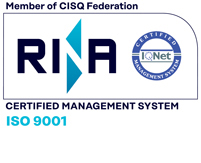Kuwait
SPETCO TO SIGN KUWAIT OIL PROJECT CONTRACT BY YEAR END
Kuwait-based contractor Spetco is expected to sign the contract for a Kuwait Oil Company (KOC) project to install depletion compression systems and sulphur recovery units (SRUs) before the end of the year, according to industry sources.Execution of the project, which will upgrade two key facilities in North Kuwait, is also expected to start before the end of the year.The project contract is expected to be signed before the end of the year and project execution will start quickly after that.Spetco submitted a bid of KD126.5m ($412m), beating bids from companies based in China, Saudi Arabia and India.The bidders and their offers were:L1 Spetco (Kuwait) – KD126.5m ($412m)L2 Jereh (China) – KD128.5mL3 Al-Khorayef (Saudi Arabia) – KD137.5mL4 Megha Engineering & Infrastructures (India) – KD169.1mIndia’s Megha was disqualified from the tender process after its bid was submitted.The project involves installing new units at the facilities known as Early Production Facility 50 (EPF-50) and Jurassic Production Facility 3 (JPF-3).Tender documents were originally made available on 17 September 2023, with a bid deadline of 17 December that year.Due to scope changes, the deadline was extended several times before bids were ultimately submitted ahead of a 15 October deadline.Scope changesIn August, the estimated budget for the project had been increased from about $380m to approximately $460m due to scope changes.The project uses the build-own-operate-transfer contract model.EPF-50 and JPF-3 are sour hydrocarbons processing and handling facilities located in North Kuwait, designed to handle high-pressure (HP) sour hydrocarbons from several Jurassic wells in North Kuwait fields.The project was launched to sustain production from the facilities by installing compression systems and SRUs.Boosting compressionThe contract’s original scope of work was divided into two parts, according to the tender documents that were released in September 2023.The first part focused on installing a new medium-pressure (MP) compression system and SRU at EPF-50.The second part focused on installing a new MP compression system and SRU at JPF-3.The EPF-50 and JPF-3 facilities receive sour wet hydrocarbons reservoir fluids through flowline gathering networks and trunk lines.Crude, gas and water are separated in a separation section currently receiving well fluid at 1,100 pounds a square inch gauge (psig), and the crude is stabilised to export after desalting.The separation section consists of HP, MP and low-pressure (LP) separators in series. MP and LP gases are compressed to HP and combined with gas from HP separators.The gas is then treated in gas sweetening and dehydration units before being exported via pipeline.As the well fluid pressure depletes to MP, the combined feed from the inlet production headers and test header will be routed through a crude pre-heater to the new MP separator, which operates at about 425-450 psig.The new compressors will compress the gas from MP to HP.The EPF-50 facility can currently process 200 million standard cubic feet a day (scf/d) of gas, 50,000 barrels a day (b/d) of oil and 130 tonnes a day (t/d) of sulphur.Originally, the upgrade project was expected to increase the volume of sulphur it can process to 270-310 t/d, but after the proposed changes to the scope, the capacity is now expected to be larger.The JPF-3 facility can currently process 150 million scf/d of gas, 50,000 b/d of oil and 200 t/d of sulphur.Originally, the planned upgrade was expected to increase the volume of gas that the facility can process to 240 million scf/d and the volume of sulphur to 440 t/d.Due to the scope changes, the capacity of JPF-3 will now be increased by more than the volumes outlined in the original tender documents.It is currently unclear just how much the capacities of EPF-50 and JPF-3 will be increased under the new project scope (ICE KUWAIT)
Fonte notizia: Meed




